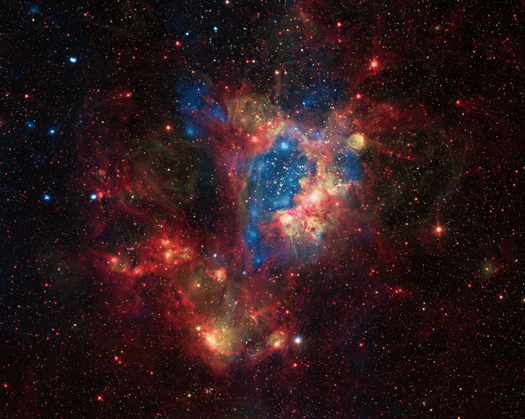APOD Robot:
"An unexpected clue of hot X-ray emitting gas was recently been detected escaping .. "
Actually, it was expected, and is the first detection of that predicted phenomenon: Sally Oey of the University of Michigan: “Observations from space have even revealed x-ray-emitting gas escaping from this superbubble, and while this is expected, this is the only object of its kind where we have actually seen it happening.”
Philip Massey of Lowell Observatory: “When we look at the speed of the gases in this cloud we find inconsistencies in the size of the bubble and the expected velocities of the winds from the central cluster of massive stars. Supernovae, the ages of the central stars, or
the orientation and shape of the cloud might explain this .. " That bolded part is where my bet is.
" .. astronomers do not agree on exactly how this bubble has evolved for up to the past 10 million years .. "
http://www.gemini.edu/node/171
Escaping gas is emitting X-rays, but no compression fronts are emitting comparable amounts? Would not a supernova have expelled that escaping gas upon exploding?
Pair the imaging up with subsequent observing runs like Hubble did with the Veil Nebula. Changes would be likely visible even at N44's distance.
Veil exploded in ~ 3000 B.C. at 2,100 light years distance. (this link claims the Veil supernova "occurred more than 20000 years ago." and the shock fronts are still emitting X-rays
https://www.noao.edu/image_gallery/html/im0532.html )
"Few astronomical objects change dramatically in a human's lifetime. We were fortunate that a portion of the 2015 Hubble WFC3 image was observed using Hubble's WFPC2 camera back in 1997. At the tremendous distance of the Cygnus Loop, roughly 2,100 light-years away, subtle motions of several shock fronts are visible over the 18 years span."
http://heritage.stsci.edu/2015/29/supplemental.html The N44 Superbubble
The N44 Superbubble

